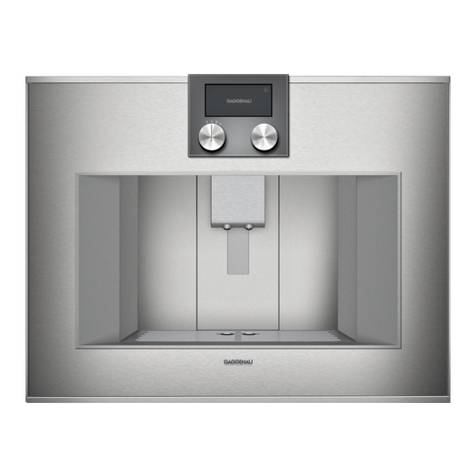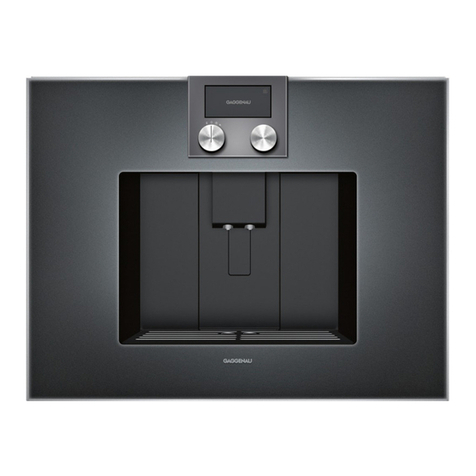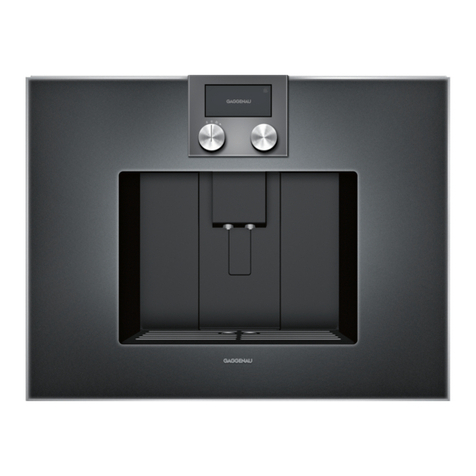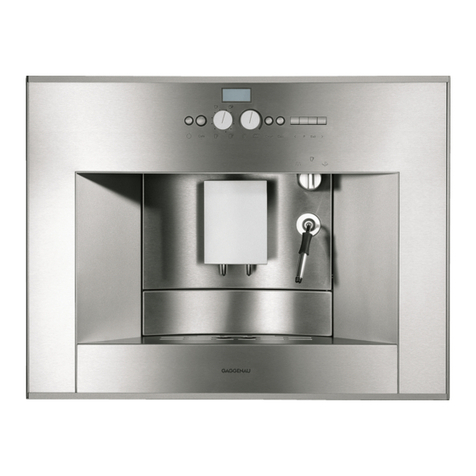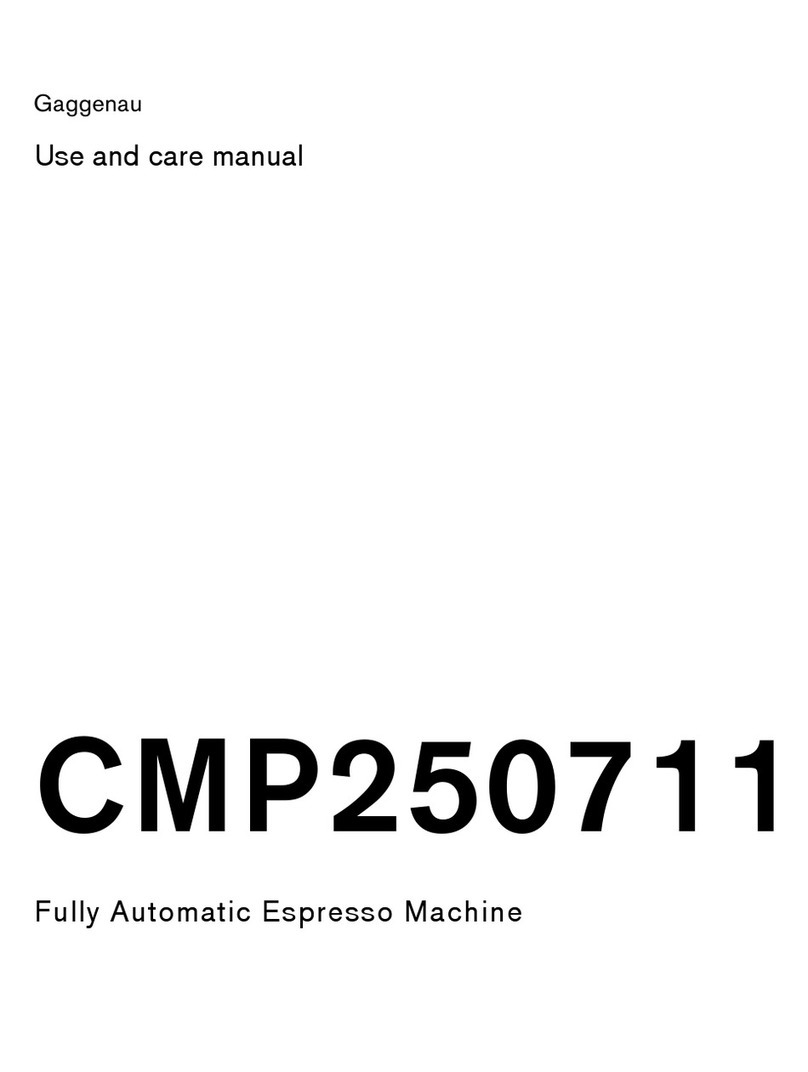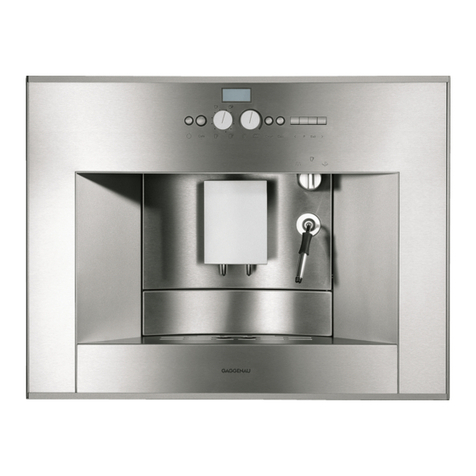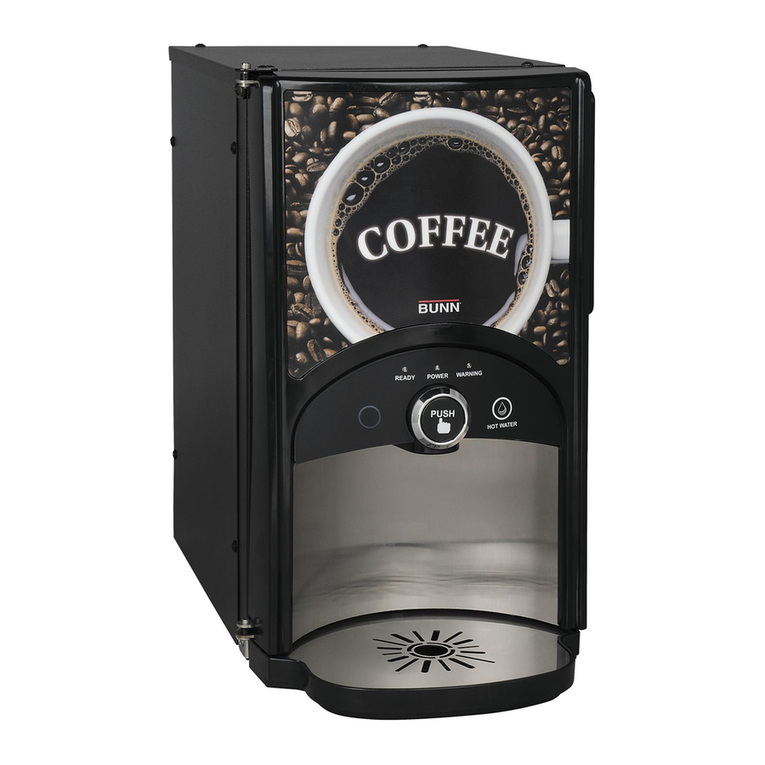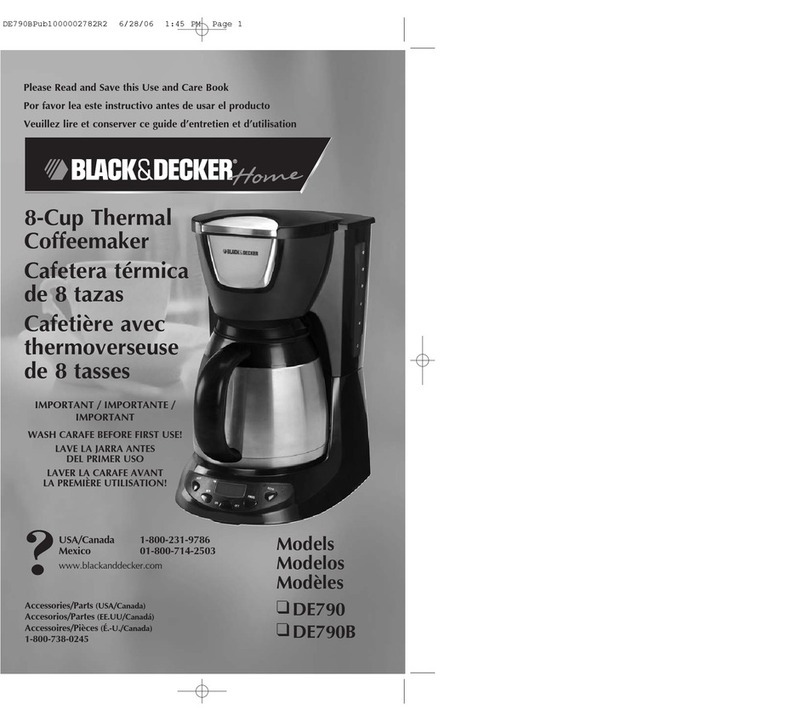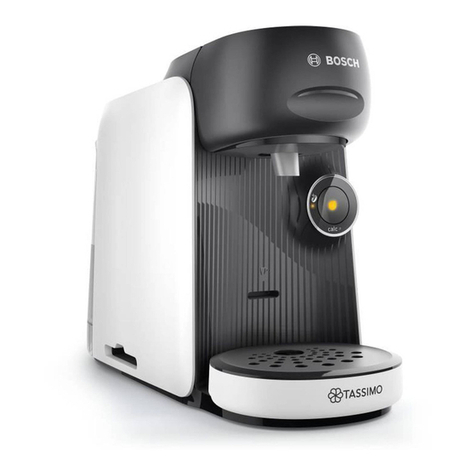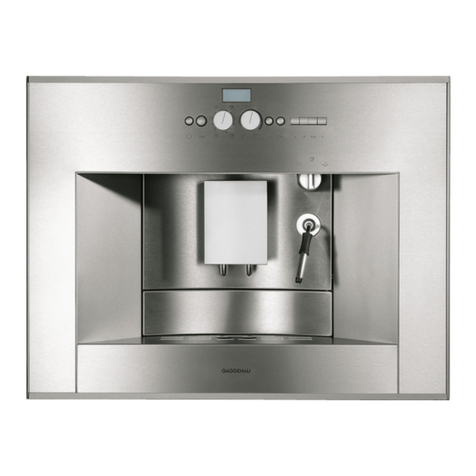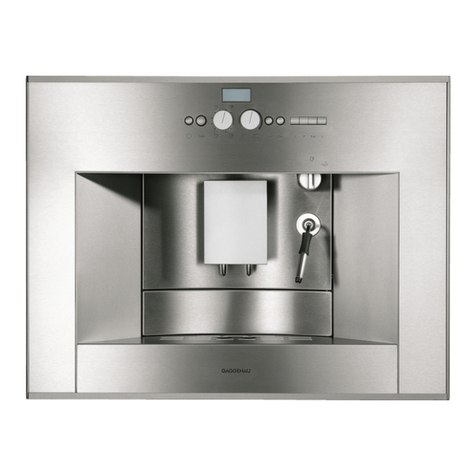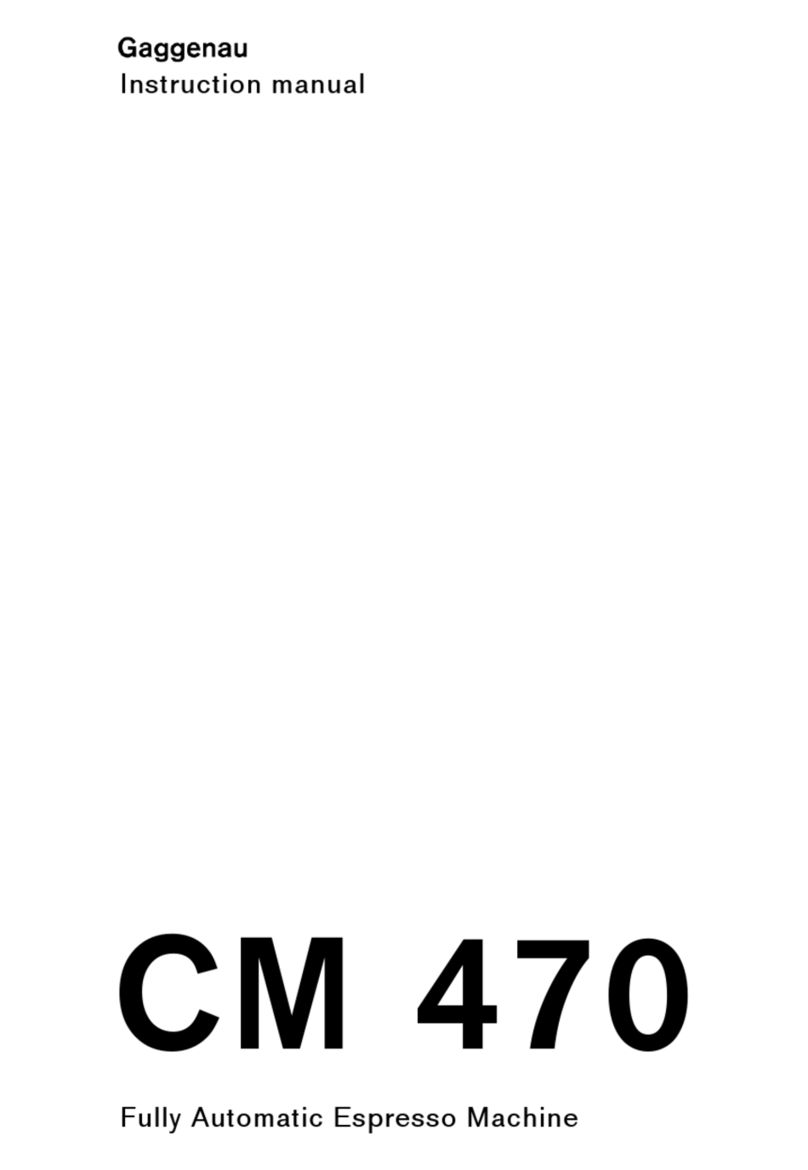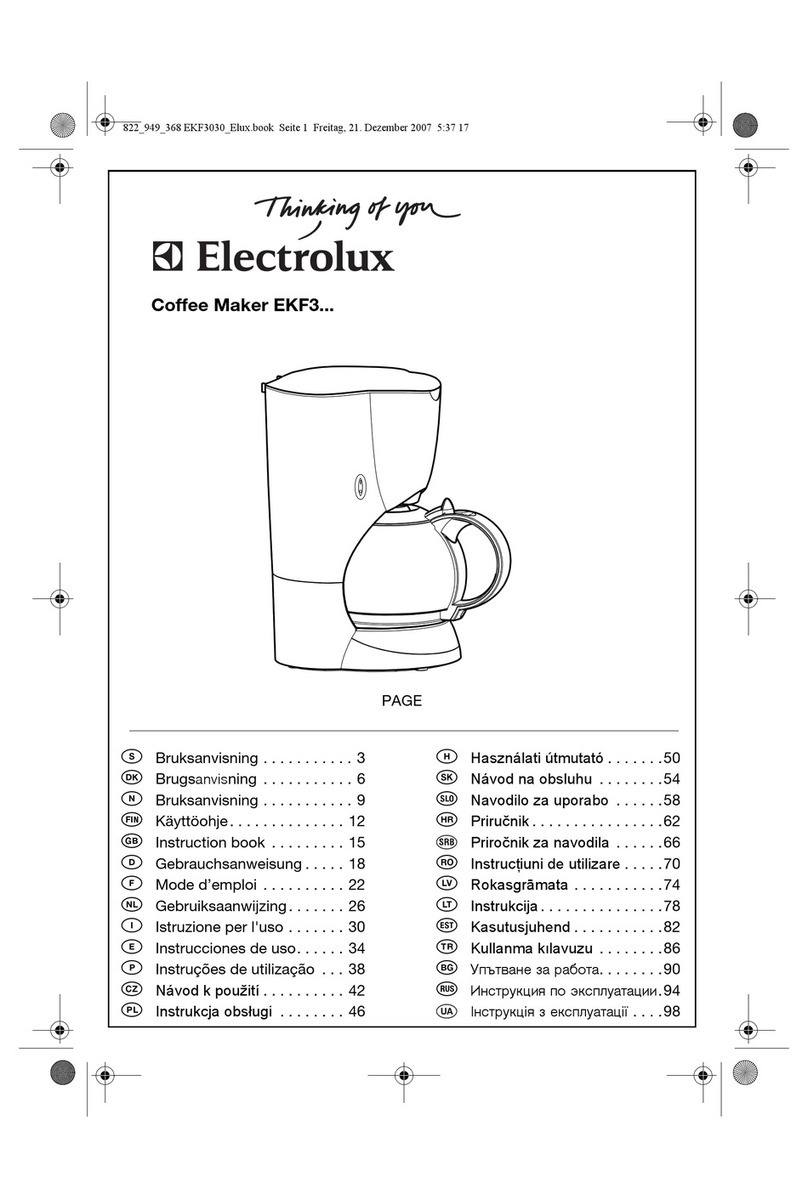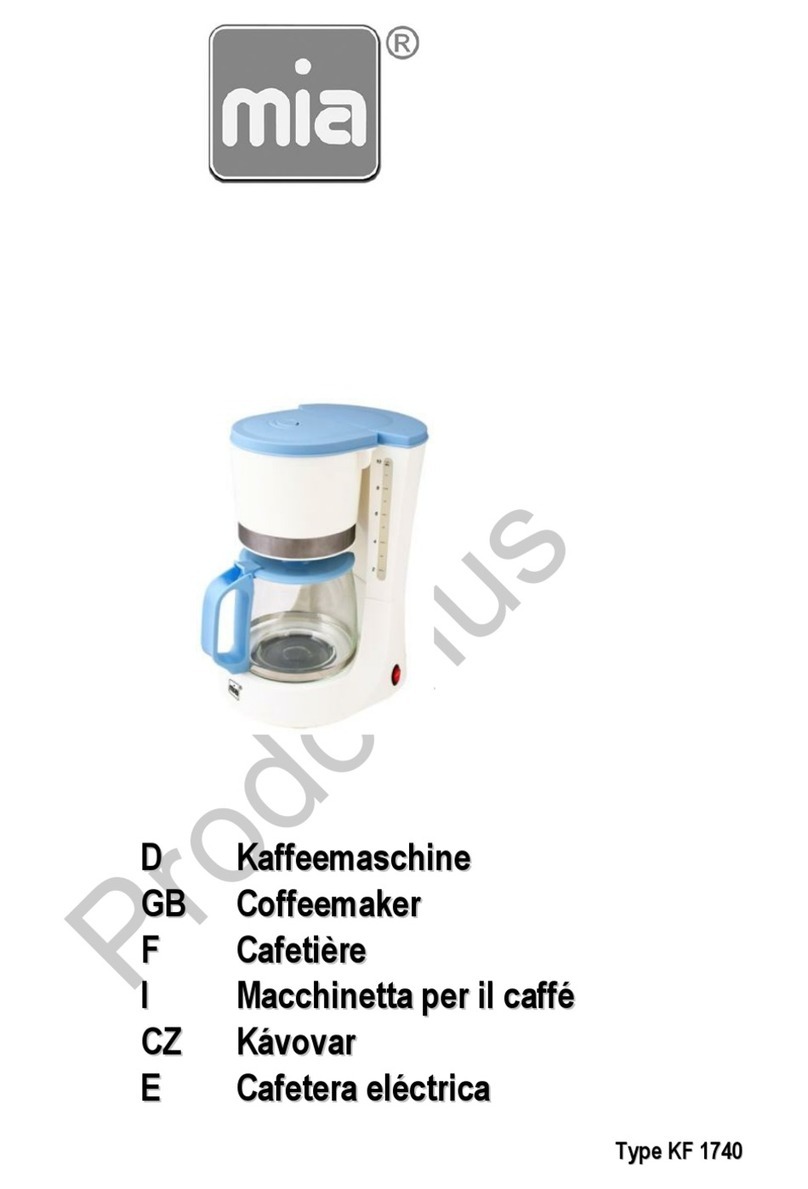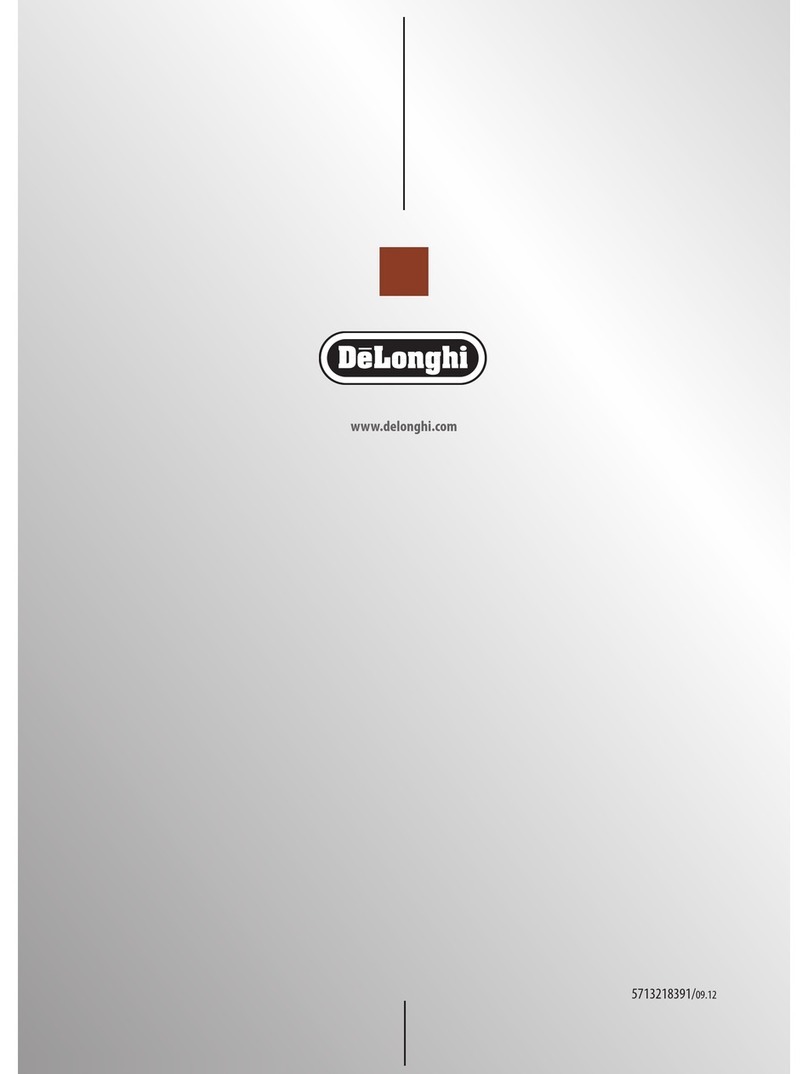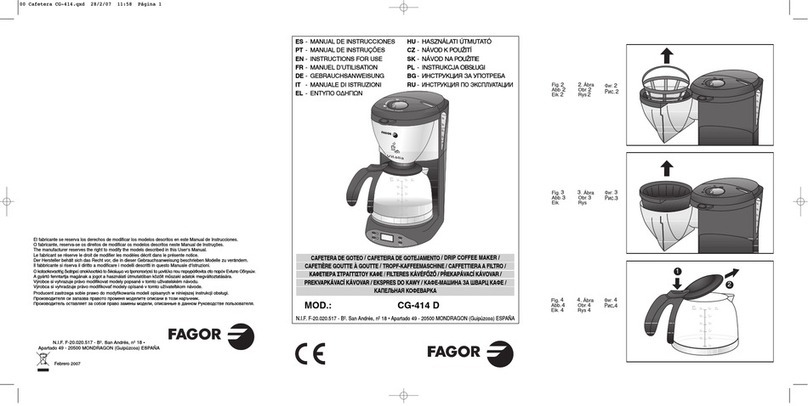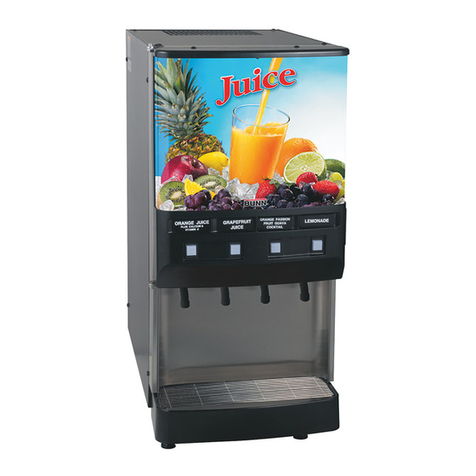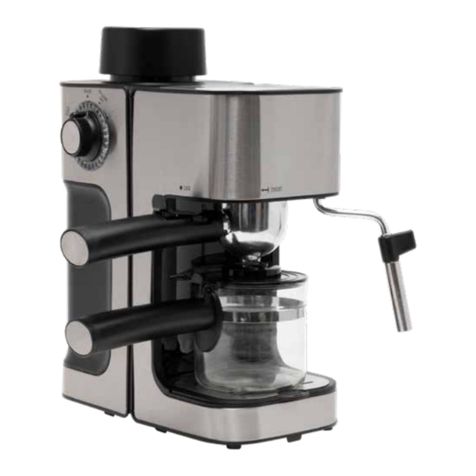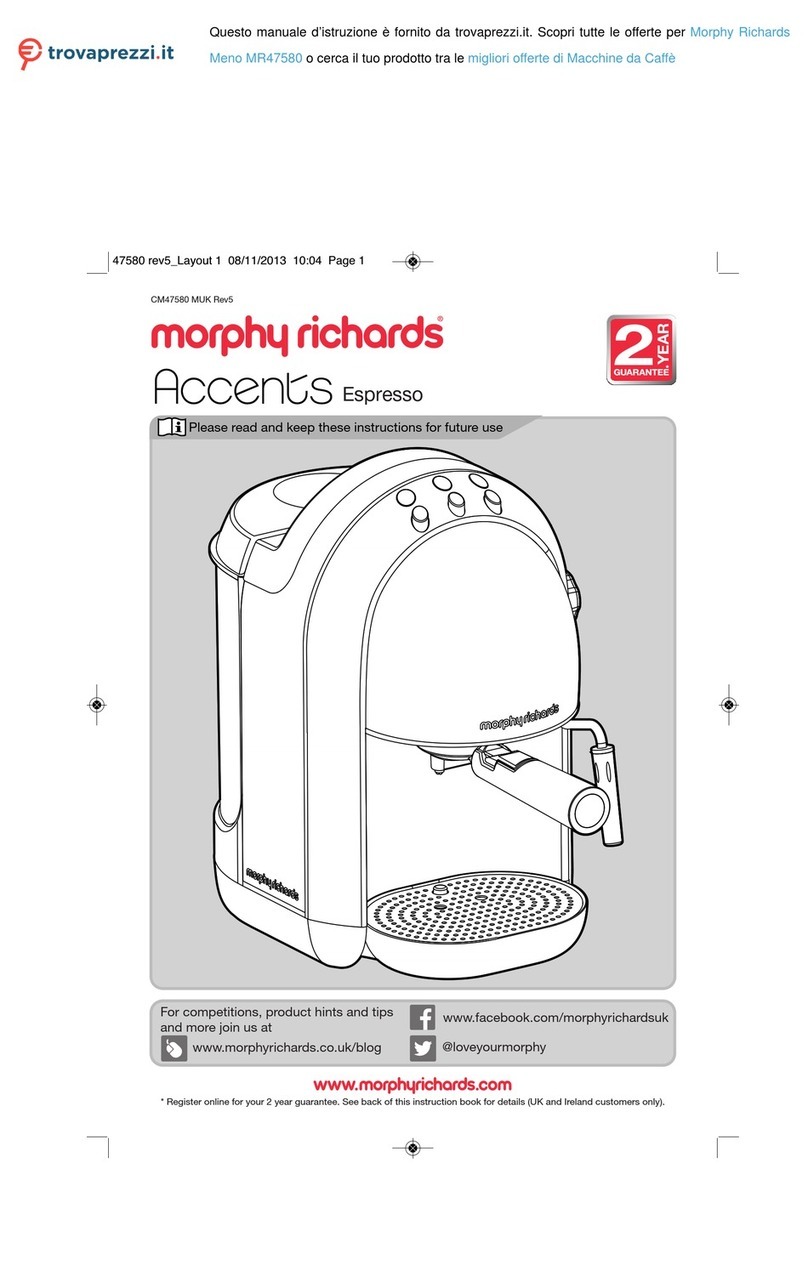
10
Installing the appliance
Make sure there is adequate aeration. To do this,
remove the rear panel or cut out an opening of 1911⁄16" x
153⁄4" (500x 400mm). There must be a gap of at least
13⁄8" (35mm) between the wall and base of the unit or
the rear panel of the unit situated above. The ventilation
slots and intake openings must not be covered. Also
follow the installation instructions for the appliance
situated above or below. If installing the appliance
above a warming drawer, the height of the recess must
be 231⁄4" (590mm). If the appliance is installed directly
under a décor panel, ensure that there is a ventilation
slot of at least 31 square inches (200cm2). The ideal
installation height for the fully automatic espresso
machine, measured from the floor to the lower edge of
the appliance, is 373⁄8" (950mm).
Protect the appliance against freezing or it will be
damaged.
NOTICE: Installation must always be performed by two
persons.
1Unpack all the parts and check for any damage in
transit. Do not operate a damaged appliance.
2Take note of the installation dimensions of the
particular model.
Important: Two opening angles can be selected for
the door. Depending on the opening angle
required, the mounting distance to the wall should
be observed before installation.
‒Opening angle approx. 110° (delivery status)
= mounting distance to the wall at least 133⁄4"
(350mm).
‒Opening angle approx. 155°
= mounting distance to the wall at least 259/16"
(650 mm).
For an opening angle of 155°, remove both the
restrictors at the top and bottom of the hinge.
3Position the assembly bracket (c) according to the
measurement stated in the image and fasten it with
2 fastening screws (e) as shown. The assembly
bracket must be positioned at the base of the unit
and the wall such that no gap is present.
4Fasten the transformer fixture (j) in the back corner
at the right with 2 screws (e), as shown.
5Attach the transformer (k) to the transformer
fixture (j). The connections to both lines must point
to the left.
Note: When positioning the transformer (k), and
pushing in the appliance, do not trap the lines.
The transformer (k) is not allowed to touch the
appliance and the back wall of the cupboard.
6Set the main switch (U) to [Û] on the appliance.
7Securely insert the front line into the appliance
(snaps into place). For this purpose, put the
appliance to be plugged in just on to the edge of
the unit. Plug the power cord into the socket.
Plug transformer into dedicated receptacle in an
accessible cabinet adjacent to the coffee maker
(depends on the built-in situation). Do not plug into
a receptacle behind the appliance.
8Push the appliance into the unit until it clicks into
place. Check that the appliance is in the middle. If
necessary, align the appliance. To do so, pull the
appliance out a little, remove the appropriate
spacers (d) and attach to the left side (top and
bottom). Push the appliance into the unit until it
clicks into place.
9Take hold of the appliance door on the right next to
the outlet and open. Remove the drip tray (Y). Pull
the cover (X) on the bottom left-hand side forwards
and remove. Pull out the accessories drawer (Z)
and put to one side.
10 First, secure the appliance using 2fastening
screws (e) each and (f) the 2sleeves (i) as shown.
Lastly, screw in the fastening screw (e) and sleeve
(h) on the cabinet’s top right.
11 Only for the expert:
In very few cases, the door of the fitted fully
automatic coffee machine can jam due to a warpage
in the cabinet where the unit is built in. The door
can be adjusted. To do this adjust the hinges at the
top and the bottom:
‒Adjust the depth of the door by turning the
screws (V).
‒Remove the hinge dampers at the top and
bottom of the hinges. Turn the screws (W) to
adjust the inclination and the horizontal position
of the doors.
‒Re-fit the hinge dampers.
12 Insert the cover (X) and fix with the two black
fastening screws (g).
13 Replace the drip tray (Y) and accessories drawer
(Z) and close the appliance door.
